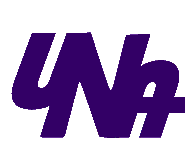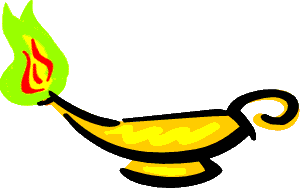Safe Needle Device Legislation |
|
|
UNA Home Site Contents Legislative Articles and White Papers Capitol Pulse 2000 Bill Summary Page UNA Government Relations Committee UtahNurses Mailing List Information Legislature 2000 Coming Events Legislative Links |
Needlestick injuries are preventable. Every day nurses are faced with the risk of needlestick or sharps injuries and exposure to potentially lethal bloodborne pathogens such as Hepatitis B, C and HIV. According to the federal government 600,000 to one million needlestick injuries to health care workers occur every year." And, according to Susan Wilburn, ANA Occupational Safety and Health Specialist, 16,000 health care workers receive a needlestick contaminated with HIV." Due to high occupational risks of exposure to disease, new technology has been, and continues to be, developed by medical supply and pharmaceutical companies. The technology has been available since the 1970's to help prevent occupational hazards, but we can't stop the "silent epidemic" if all health care facilities are not using safe needle devices. Cost continues to be a source of resistance to use safer needle devices. When comparing the cost of a safe needle device or a needleless system to the cost of care for those who have been exposed and or seroconverted is an enormous savings to the health care facility. "Hepatitis C is the most frequent infection resulting from needlestick and sharps injuries, of infected carriers, 85% become chronic carriers and can pass on the disease to others." Drugs used to slow the progression of Hep C averages $1,700/month. The disease can also lead to the need for a liver transplant at a cost of $500,000. "The drug treatment designed to prolong HIV (postexposure prophylactic antiviral medication) can cost up to $6,000/month."The cost of follow-up for a high-risk exposure is almost $3,000 per needlestick injury - even when no infection occurs." There are also concerns for the emotional turmoil and fear when exposed - this may require extensive counseling and lost time at work. The costs of medication, hospitalization and counseling seriously tilts the scale in favor of spending only a matter cents more per safe needle system. "Available information states that FDA approved products currently used in health care facilities cost between 8 and 12 cents per needle as compared to 35 and 60 cents per needle with safety integrated features." The Utah bill will grandfather using up current stock supplies of needles to comply with the fiscal needs of agencies and suppliers. A concern regarding Safe Needle Device legislation, expressed by some of our colleagues in health care, is mandating the use of safe needle systems. Mandates are always considered seriously by the legislature because it forces, by law, to comply with the bill as written according to rules. However, in this case It does not seem appropriate in terms of parity to set a standard for only those who are progressive in the world of occupational protective technology and the health care agencies that have a vision of safety for all health care workers. According to UNA discussions with random health care agencies in Utah, some have begun incorporating needless systems in selected departments or have budgeted for the purchase of safe needle devices. The legislation states that Safe needle devices will only be required where there is market availability, where patients will not be compromised, and where the use is appropriate for the patient's procedure. Every nurse (and direct health care provider) deserves a safe working environment that includes a system for reporting sharps injuries. It has been noted by the CDC, OSHA and ANA that the reporting of needlestick injuries is grossly under-reported. CDC states that "only 15% of occupational sharps injuries are reported" and OSHA states that "only 10% of injuries are recorded on the OHSA 200 Logs." Health care agencies cannot make informed judgment on new devices/technology if there is not accurate data collected to measure outcomes.The Utah Occupational and Safety (UOSH) division of OSHA provides forms that are to be used for reporting injuries, and a maintenance of a sharps injury log. The system is in place, but it should be accurately and effectively managed. Training is another issue that must be addressed. A representative from a Salt Lake City area hospital recalled "observing the use of a safe needle device, but the protective piece was not activated!" It is a waste of money if the nurses are not trained properly on how to use a device. Anytime a safety standard is changed or enhanced, we experience some apathy among those who must learn and engage in the new process. Proper training and experience has been shown to reduce the resistance to change and improve the safety of employees. In 1991, OSHA specifically wrote the Bloodborne Standards of Safety to protect health care workers. According to OSHA, "there are more than 1,000 infections caused by 20 pathogens (including tuberculosis,syphilis,malaria and herpes) are estimated to be transmitted through sharps or needlestick injuries annually", they also "estimate that one in six contamination's stems from HBV, one in 20 from HCV, and one in 300 from HIV." This is a national epidemic. All nurses have been trained to use the standards put forth in 1991such as: One-handed recap of a needle and the proper disposal of biohazards waste containers.The process of change can be successful if it is mandated that all health care agencies follow the updated directive as a universal standard of training. Most hospitals currently have committees that include front line health care workers to participate in the decision making process of purchasing devices. There are agencies that do not use the expertise and perspective of nurses using needles. At times, non-medical personnel are charged to do the purchasing without the necessary input from qualified professionals. Often, the nurse uses what is available (usually without question of alternative devices) to perform their jobs. this is another reason to mandate safe needle device legislation to protect all nurses, not just some of them. The foundation of the Safe Needle Device legislation listed above, has been addressed by UOSH. The National organization dispersed a compliance directive on November 4, 1999 to all OSHA agencies. Unfortunately, a compliance directive is not a standard and is not enforceable. The Safe Needle Device legislation will take nursing to a new level of safety and catch up with what is currently being developed in the field of medically engineered technology. CDC is currently working on a guidance document (projected completion date:Summer 2000) to develop a safety plan related to needlestick injuries. Sarah Kritchley, National Center for Infections (Department of CDC), states that they are "working as fast as they can to have the guidance document in place for the states that have already passed safe needle device laws." At this time, there are 6 states that have passed legislation and 22 states who are in the process. According to ANA, It will take up to 7 years or more to push legislation through the Federal government and have standards changed into law. Jackie Pomfret, ANA Lobbyist, states that "Orin Hatch, U.S. Senator, Utah, doesn't know about the issue and has not heard from the nurses in his state." He has therefore voted against Safe Needle Device Legislation at the federal level. A resolution was passed at the ANA House of Delegates last summer in Washington D.C. to take the Safe Needles Save Lives campaign to our respective States. The UNA response is to take action and save as many nurses and health care workers from occupational needlestick injuries without waiting for the lengthy federal process to trickle down to the state level years from now. We must pass this bill as soon as possible to save lives and the anguish of exposure to potentially lethal bloodborne pathogens. For more information on the Safe Needles Save Lives campaign, please access the ANA's safe needle legislation web site - www.needlestick.org or the UNA web site - www.xmission.com/~una. |
 We have a Vital Purpose!
We have a Vital Purpose! 